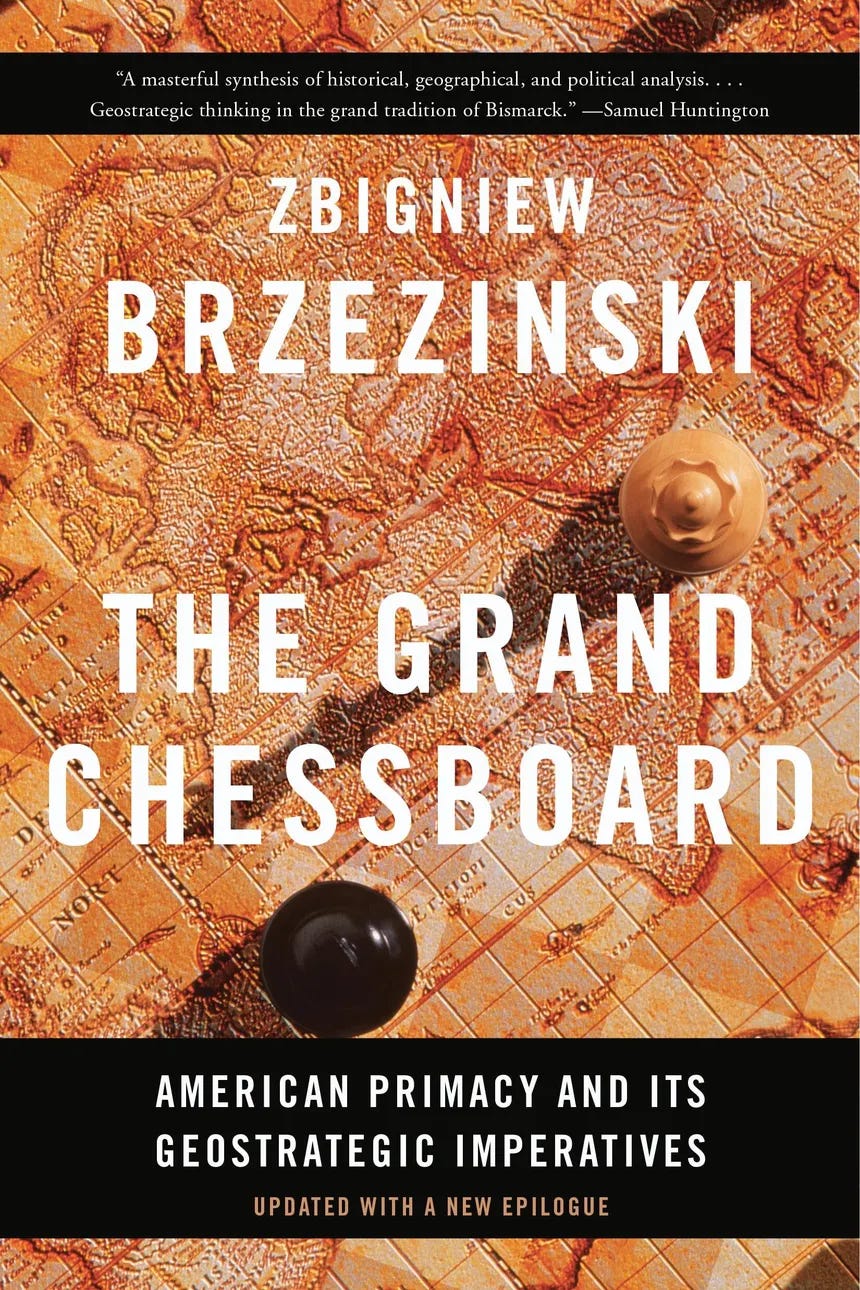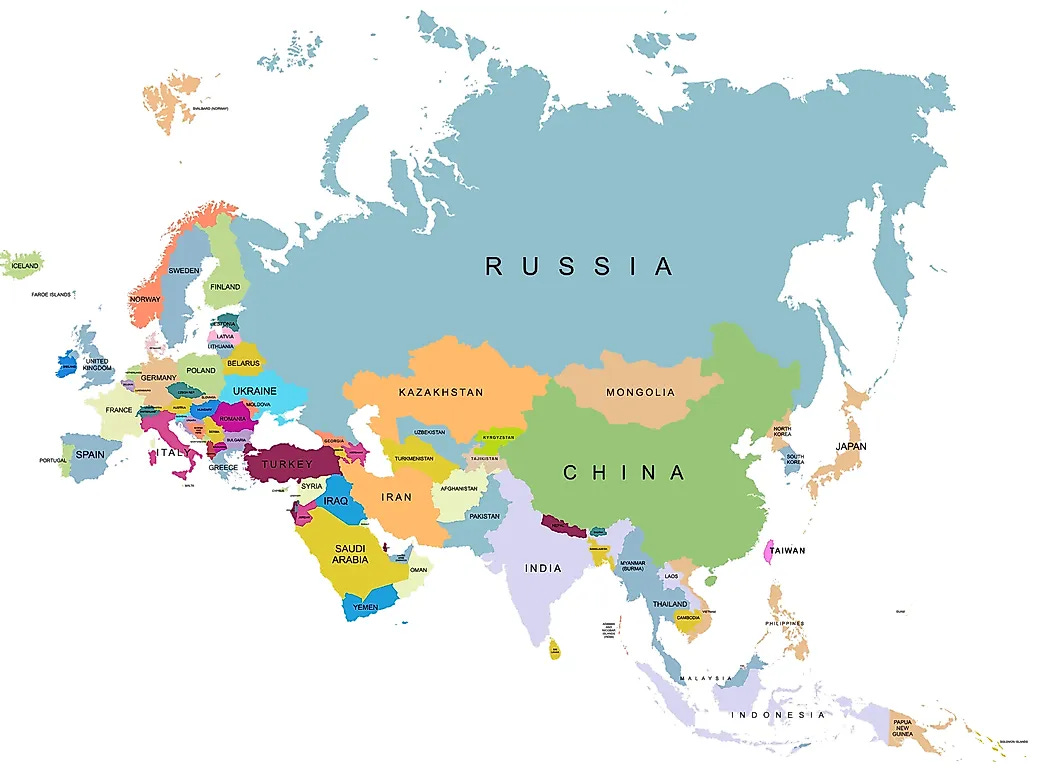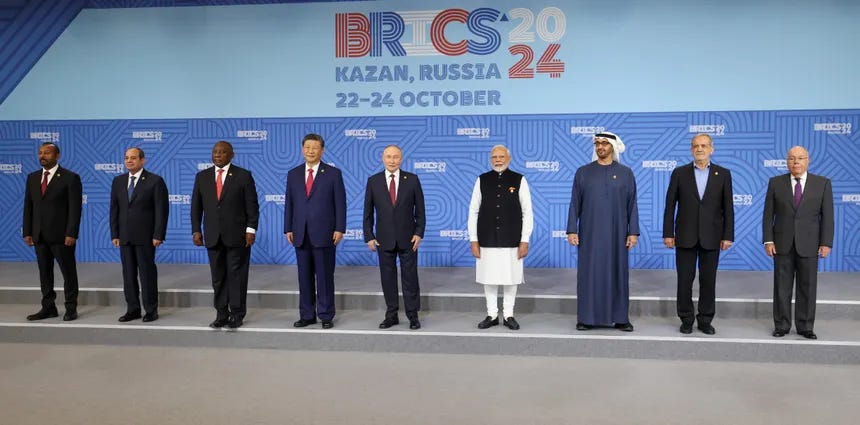
This article explores the political legacy of Zbigniew Brzezinski, a key architect of U.S. Cold War strategy and author of The Grand Chessboard. It examines how his geopolitical vision—rooted in realism, strategic containment, and global engagement—continues to shape U.S. foreign policy today.
Introduction
Zbigniew Brzezinski, National Security Advisor to President Jimmy Carter and a towering figure in Cold War strategy, helped shape the geopolitical framework of the modern world. Known for his hawkish stance on the Soviet Union and a keen understanding of Eurasian dynamics, Brzezinski's legacy extends beyond his tenure in office. His strategic blueprint, particularly through his seminal work "The Grand Chessboard," continues to inform U.S. foreign policy today. This article delves into the foundational elements of Brzezinski's political strategies and their long-lasting impact.

Containment of the Soviet Union
Brzezinski's approach to the Soviet Union was uncompromising. A committed anti-communist, he utilized a variety of tools—diplomatic, military, economic, and covert—to contain Soviet expansion. He was instrumental in initiating Operation Cyclone, which funneled U.S. support to the Afghan Mujahideen, a move that significantly drained Soviet resources.
Operation Cyclone was one of the longest and most expensive covert CIA operations, from 1979 to 1989. It provided billions of dollars in arms and financial aid to Afghan insurgents resisting the Soviet invasion of Afghanistan. The operation was conducted primarily through Pakistan's Inter-Services Intelligence (ISI), allowing plausible deniability while directly challenging Soviet military might.
Afghan Mujahideen refers to the guerrilla fighters who waged jihad against the Soviet forces occupying Afghanistan. These groups were a loose coalition of tribal warlords, Islamist militants, and nationalists. Brzezinski believed that by supporting them, the U.S. could create a "Vietnam-style" quagmire for the USSR, eventually contributing to the Soviet Union's collapse.
Additionally, Brzezinski reinforced U.S. alliances, especially NATO, to encircle and deter Soviet influence in Europe.
Promotion of U.S.-China Relations
Understanding the strategic advantage of a Sino-American alignment, Brzezinski played a key role in normalizing diplomatic relations with China in 1979. This move strategically isolated the USSR and opened the door for greater economic and political cooperation with Beijing. The shift transformed the global balance of power and laid the groundwork for China’s integration into the world economy.
Sino-American alignment refers to the strategic partnership between the United States and the People's Republic of China during the latter half of the Cold War. Recognizing their mutual interest in counterbalancing Soviet power, both nations chose pragmatic cooperation over ideological conflict. The alignment began with President Nixon's 1972 visit to China and was solidified under Carter and Brzezinski through formal diplomatic recognition. This partnership not only isolated the Soviet Union diplomatically but also helped China embark on economic reforms and open up to global trade.
Strategic Use of Human Rights
Brzezinski diverged from the realpolitik approach of contemporaries like Henry Kissinger by advocating human rights as a strategic tool. Realpolitik, a German term meaning "realistic politics," refers to diplomacy based on practical objectives rather than moral or ideological considerations. While Kissinger focused on power balances and strategic stability, Brzezinski believed that supporting dissidents and promoting democratic values could destabilize authoritarian regimes from within. He saw the promotion of democracy and support for dissidents in Eastern Europe, such as Poland's Solidarity movement, as both a moral and tactical initiative to weaken Soviet control.
Arms Control Coupled with Military Strength
While Brzezinski supported arms control agreements like SALT II, he simultaneously called for a modernized and technologically advanced U.S. military.
SALT II (Strategic Arms Limitation Talks II) was a bilateral treaty negotiated between the U.S. and the USSR to limit the production of strategic nuclear weapons. Though it was never formally ratified by the U.S. Senate due to the Soviet invasion of Afghanistan, both superpowers adhered to its terms for years. Brzezinski endorsed SALT II to manage the arms race, provided the U.S. maintained technological superiority and strategic flexibility.
Middle East Diplomacy
A master tactician in regional diplomacy, Brzezinski was pivotal in orchestrating the Camp David Accords between Egypt and Israel in 1978.
The Camp David Accords were a series of negotiations brokered by President Carter, with Brzezinski's behind-the-scenes guidance. The agreements led to the first peace treaty between Israel and an Arab country, Egypt. By securing this historic accord, Brzezinski aimed to reduce Soviet influence in the Middle East, ensure access to critical oil supplies, and position the U.S. as a regional stabilizing force.
Covert Operations and Proxy Wars
Brzezinski was a key architect who used indirect warfare to counter Soviet influence globally. He supported anti-communist insurgencies in Asia, Latin America, and Africa in a global chess match where the U.S. could exert influence without direct confrontation. These efforts often involved the CIA and local allies, shaping the covert landscape of the Cold War.
Soviet-backed regimes during Brzezinski's tenure included governments in Angola (MPLA), Mozambique (FRELIMO), Ethiopia (Derg regime), Nicaragua (Sandinistas), and Cuba (under Fidel Castro). These governments often aligned ideologically and militarily with Moscow. Brzezinski supported efforts to undermine these regimes through covert funding, military aid to opposition groups, and diplomatic isolation.
Opposition to Soviet-Backed Regimes
He supported interventionist policies to challenge regimes aligned with the USSR, from Angola to Nicaragua. These interventions aimed to halt the spread of communism and reinforce U.S. ideological and strategic dominance in the developing world.
Grand Strategy of U.S. Primacy
In "The Grand Chessboard," Brzezinski outlined a vision of global order centered around U.S. leadership, especially in Eurasia.
Eurasia is the vast continental landmass comprising both Europe and Asia. It holds immense geopolitical importance due to its population, economic hubs, energy resources, and military powers. Brzezinski argued that dominance over Eurasia was the linchpin to global supremacy. If no rival power could control Eurasia, the U.S. could maintain its global leadership indefinitely.
He argued that the U.S. must prevent any single power from dominating the region. His strategic framework emphasized maintaining control through alliances, economic integration, and, when necessary, military presence.
The Grand Chessboard
A Blueprint for Global Strategy In his 1997 book The Grand Chessboard: American Primacy and Its Geostrategic Imperatives, Brzezinski elaborated on the importance of Eurasia in global affairs. He posited that the United States must manage Eurasia as a strategic "chessboard" to maintain dominance as the first truly global superpower.
Brzezinski’s key principles included
· Preventing the emergence of a rival hegemon in Eurasia, especially Russia or China.
· Strengthening alliances with key regional players like Western Europe, Japan, India, and South Korea.
· Expanding NATO and fostering regional economic integration to bind Eurasian states into a U.S.-led order.
· Managing relationships with rising powers through a combination of engagement and containment.
Brzezinski emphasized the need for strategic foresight, cautioning that domestic decline or geopolitical complacency could erode American influence. He also acknowledged that U.S. primacy was not guaranteed and required active diplomatic and military engagement.
Ethical Implications of CIA Operations
While effectively countering Soviet influence, the CIA operations supported under Brzezinski's strategy sparked significant ethical debates.
Key ethical concerns included:
Violation of sovereignty: Covert operations often interfere in the internal affairs of other nations without transparency or accountability.
Support for authoritarian regimes: In pursuit of anti-communist allies, the U.S. frequently backed regimes that committed human rights abuses.
Blowback: Operations such as supporting the Mujahideen in Afghanistan led to long-term consequences, including the rise of the Taliban and Al-Qaeda.
Democratic contradictions: These operations sometimes contradicted American ideals of liberty and self-determination.
Brzezinski viewed these methods as necessary realpolitik during an existential struggle with communism. Yet critics argue that such actions undermined America’s moral authority and sowed instability in many regions.
Influence on Post-Cold War U.S. Policy
Brzezinski's strategies did not end with the Cold War. His ideas significantly shaped U.S. foreign policy well into the 21st century.
Examples include:
NATO expansion under Clinton aligned with Brzezinski's goal of consolidating Western influence in Eastern Europe.
George W. Bush's policies in Afghanistan and support for color revolutions echoed Brzezinski's containment strategy.
Barack Obama's pivot to Asia reflected Brzezinski's concern about China becoming a dominant power in Eurasia.
Joe Biden's strong NATO support and counter-Russian posture following the 2022 invasion of Ukraine continues Brzezinski's legacy.
Color revolutions refer to a wave of popular protest movements in post-Soviet states during the early 2000s that sought to overthrow authoritarian or corrupt regimes through largely non-violent means. These included:
Rose Revolution in Georgia (2003): Sparked by widespread electoral fraud, it led to the peaceful resignation of President Eduard Shevardnadze and the election of pro-Western reformer Mikheil Saakashvili. The movement was driven by youth organizations and civil society groups advocating democratic change.
Orange Revolution in Ukraine (2004): Triggered by allegations of vote-rigging in the presidential election, millions of Ukrainians protested in Kyiv and across the country. The result was a re-run of the election, which brought opposition leader Viktor Yushchenko to power, marking a turn toward Europe and democratic reform.
Tulip Revolution in Kyrgyzstan (2005): Fueled by public anger over corruption and fraudulent parliamentary elections, the protests culminated in the ousting of President Askar Akayev. Though the aftermath was turbulent, it reflected a growing demand for political accountability in Central Asia.
Backed by civil society groups and often supported by Western institutions promoting democracy, these uprisings aimed to install pro-Western governments and strengthen democratic governance. Though not directly orchestrated by the U.S., Russia saw them as Western-backed efforts to limit Moscow's influence in its near abroad. Brzezinski supported such democratic transitions as part of a broader strategy to contain Russia and promote liberal values.
National Endowment for Democracy (NED)
Founded: 1983, during the Reagan administration (after Brzezinski’s tenure, but with ideological alignment). Function: Funded NGOs, unions, media, and political movements in authoritarian states to promote democratic values.
Connection: Reflected Brzezinski’s philosophy of soft power and ideological warfare—particularly in Eastern Europe.
Activities: Supported Solidarity in Poland, democratic groups in the USSR, and later Color Revolutions.
Role: A significant watchdog and advocate for civil liberties and democratic institutions.
Activities: Oversaw Soviet repression, championed dissident voices, and promoted independent media.
Connection: Brzezinski collaborated with and commended its efforts as part of broader U.S. strategic objectives.
Radio Free Europe / Radio Liberty (RFE/RL)
Supported by the U.S. Congress and CIA during its initial phases. • Objective: To disseminate uncensored news and ideas into Eastern Bloc nations.
Brzezinski’s Perspective: An essential weapon in the information battle against communism.
Open Society Foundations (George Soros)
Founded in 1984, inspired by Karl Popper’s ideas of “open societies.”
Role: Funded civil society, media, education, and justice reform across the former Soviet Union and beyond.
While Soros maintained ideological independence, Brzezinski supported similar goals of undermining closed, authoritarian systems from within.
Polish Solidarity Movement (Solidarność)
Not a funder but a movement that aligned with Brzezinski’s anti-communist priorities.
Brzezinski, of Polish descent, was a strong supporter of U.S. backing for Solidarity, viewing it as a means to undermine Soviet control in Eastern Europe.
U.S. Agency for International Development (USAID)
Role: Provided direct and indirect funding to civil society organizations globally.
Brzezinski advocated for the strategic use of foreign aid to strengthen dissidents and democratic institutions in authoritarian regimes.
Zbigniew Brzezinski’s grand strategy was rooted in the ideological contest between liberal democracy and authoritarian communism. He championed tools like USAID and civil society support not as charitable gestures but as strategic instruments to undermine hostile regimes and promote a U.S.-led global order.
In contrast, modern liberal values promoted by institutions like USAID today often emphasize progressive social agendas that Brzezinski may have viewed as ideologically adjacent to the Marxist ideas he once fought. This shift raises legitimate concerns about whether these tools' message still aligns with their original mission.
Donald Trump’s efforts to defund USAID reflect a growing discomfort with exporting these evolved values rather than a rejection of soft power itself. However, a complete withdrawal from such programs risks ceding global influence to China and Russia—something Brzezinski would have seen as strategically dangerous.
Ultimately, the path most aligned with Brzezinski’s legacy wouldn’t abandon U.S. influence abroad but reclaim and reshape it—ensuring that America’s soft power reflects its foundational ideals and serves clear strategic purposes in the 21st-century geopolitical chessboard.
Instead of blanket defunding, Brzezinski would likely support:
• Reforming USAID to refocus on:
• Classical liberal values (free speech, free markets, religious freedom)
• Strategic democracy promotion in authoritarian states
• Undermining China/Russia's influence in Africa, Central Asia, and Eastern Europe
• Doubling down on influence, not retreating from it
Because for Brzezinski, the method was never the problem—it was the message.
Trump and Putin in the Brzezinski Context: Strategic Contrasts and Contemporary Implications
Donald Trump's presidency (2017–2021) and return to office reflect a complex relationship with Brzezinski’s geopolitical legacy—marked by partial alignment, clear divergences, and an evolving global landscape shaped significantly by Vladimir Putin’s modern Russia.
Trump’s Alignment with Brzezinski’s Strategy:
Challenging China’s rise: Trump’s confrontational trade and tech policies mirrored Brzezinski’s strategic concern about China’s growing dominance in Eurasia.
Pressure on NATO: Although often controversial, Trump’s insistence on increased European defense spending indirectly supported Brzezinski’s call for stronger transatlantic security cooperation.
Countering Iran: Trump’s "maximum pressure" policy and exit from the Iran nuclear deal paralleled Brzezinski’s goal of containing regional adversaries to protect U.S. interests.
Trump’s Divergence from Brzezinski:
Disruption of alliances: Brzezinski championed long-term multilateral alliances; Trump’s transactional approach strained NATO and EU ties, undermining collective strategic leverage.
Isolationism: While Brzezinski emphasized proactive global engagement, Trump favored retrenchment and reduced U.S. involvement in international institutions.
Soft stance on Russia: Trump’s ambivalence toward Putin and hesitance to confront Russian aggression contradicted Brzezinski’s firm containment doctrine.
Putin’s Russia vs. Soviet Communism
Vladimir Putin's Russia poses a different challenge than the Soviet Union Brzezinski fought to contain. Key contrasts include:
Ideological shift: The USSR promoted global Marxism; Putin’s Russia champions nationalism, Orthodox Christianity, and managed capitalism.
Governance: The Soviet system was ideologically centralized under the Communist Party; Putin rules via authoritarian populism, elite oligarchy, and centralized control.
Geostrategy: The USSR backed revolutionary movements worldwide; modern Russia seeks buffer states and influence in surrounding borderlands, not global ideological dominance.
Continuities: Both regimes use propaganda, military coercion, and anti-Western rhetoric to maintain internal control and geopolitical leverage.
Trump’s Potential Second-Term Outlook
Trump may intensify his America First doctrine, with mixed alignment to Brzezinski:
America First Diplomacy: Greater emphasis on bilateral deals, reduced commitment to NATO, and minimal support for global governance.
Aggressive China Policy: Continued decoupling, tech restrictions, and protectionism to curb China’s global influence.
Ambiguity toward Russia: Potential reduction in Ukraine support and warmer ties with Putin, weakening containment.
Middle East Realpolitik: Preference for stability over reform, continued support for autocratic allies.
Shift away from Human Rights promotion narrative: Retreat from democracy-building programs, diverging sharply from Brzezinski’s use of ideological pressure.
Cyber and Tech Superiority: Investment in U.S. tech dominance aligns with Brzezinski’s call for strategic military and technological advantage.
Synthesis
Trump’s foreign policy draws from Brzezinski’s realism but differs in the long-term alliance-building and strategic cohesion central to Brzezinski’s vision. Meanwhile, Putin’s Russia—though ideologically distinct from the Soviet Union—continues to challenge U.S. primacy, requiring updated forms of containment in areas such as (BRICS (Brazil, Russia, India, China, and South Africa—which now includes newer members like Iran, Saudi Arabia, UAE, Egypt, Ethiopia, Argentina)and US de-dollarization.
Conclusion
Zbigniew Brzezinski's geopolitical vision combined hard-nosed realism with a long-term commitment to American global leadership. He shaped a foreign policy doctrine that influenced generations of U.S. leaders through diplomacy, covert operations, alliance-building, and strategic writings. While his methods continue to spark debate, his strategic foresight and contributions to global stability and American primacy remain enduring and deeply relevant.
I want to thank my friend Sam for inspiring a deeper dive into Zbigniew Brzezinski's Grand Chessboard.
What do you think? I look forward to your comments below.







